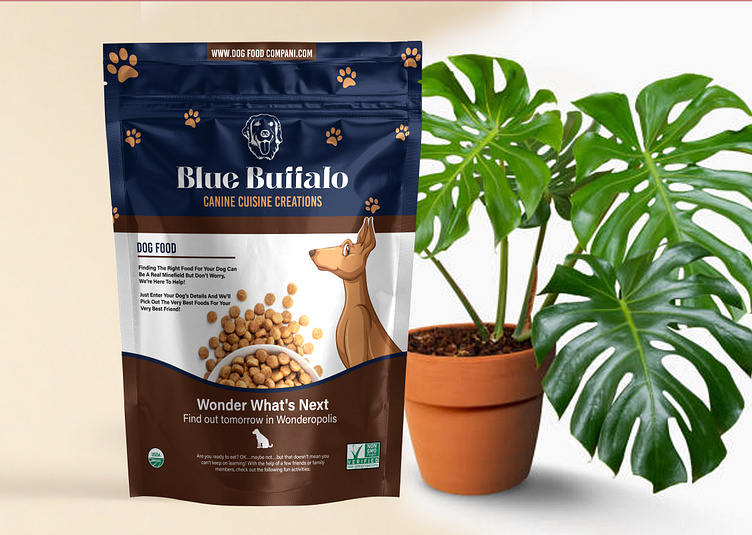PET DRY food pouch packaging design
Dry food
Dry food looks like a biscuit or kibble and comes in bags of varying sizes. It does contain water, usually up to about 11%, which is added into the mix of ingredients to make a dough, rather like bread-making. The dough will rise in the cooker and then is pushed through a small hole or die, under pressure. This process causes the dough to heat up, and it is cooked as it is pushed through. A cutter then cuts the cooked dough coming through into kibbles. The die can have holes of different shapes and sizes which is what gives the kibble its appearance. Some kibbles are simply round in shape whilst others might be fish shaped, heart or cubed depending on the manufacturer’s preferences.
Ingredients
If you look at the ingredients list on a packet of dry food, many of the names will be similar to those found on a wet or canned food, but with a few differences. Most dry food has more carbohydrate in it and this will usually be provided by cereals such as wheat, corn (or maize) or barley. Often they will appear as the first ingredient on a dry pet food packet, meaning that this is the ingredient which weighs the most. In dry food, carbohydrate helps to hold the kibble together (again it’s likened to bread or biscuits) and gives it structure and texture. While a cat or dog doesn’t strictly need carbohydrate in their diet, it brings an economical readily available energy supply to the food and is a source of other nutrients such as important amino acids (building blocks of proteins) and fibre.
Dry food will still contain other ingredients such as meat meal and fats, though these ingredients are ground and mixed together, so you won’t see pieces of meat in the food. Again these ingredients are providing energy to the diet, along with protein to help with muscle, skin and coat maintenance and other processes in the body. Protein can sometimes be provided to the diet through vegetable ingredients such as soybean.


